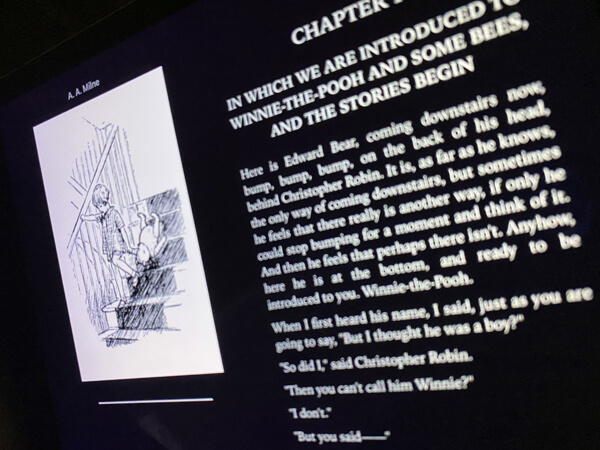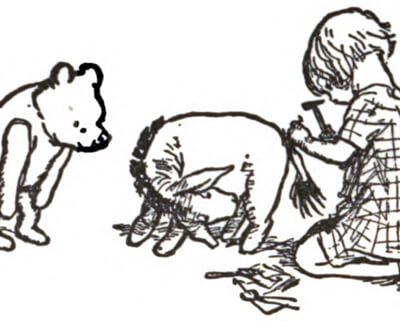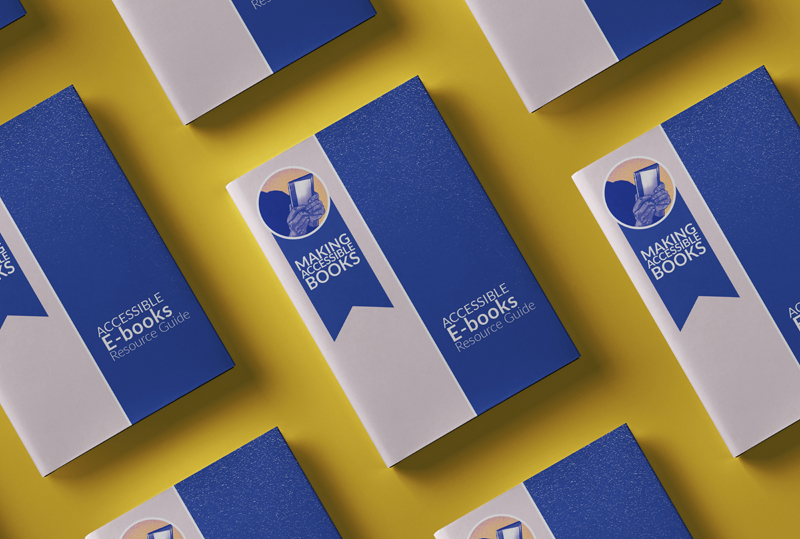
E-BOOKS
Creating Accessible e-books
Image source: Anne Zbitnew
Some people with print disabilities read e-books on computers or mobile devices. They may also use assistive technologies including screen readers, refreshable braille displays, or screen-magnification software. People who are blind, for example, may navigate books by moving between pages and chapter or section headings, and by navigating to a particular section of interest from the table of contents. People with low vision or reading disabilities may want to adjust font size or change font and background colours. People with mobility impairments may prefer to read and navigate digital books by using voice commands or other assistive technology.
Accessibility Guidelines
AccessiblePublishing.ca has developed a best practices guideline written in plain language on accessibility for EPUB issues in both English and French. This resource provides information for publishers who want to create born-accessible publications, describing the most important features that make an EPUB file accessible, the barriers posed by incorrectly coded EPUBs, and provides suggestions for best practices with links to more information.
AccessiblePublishing.ca recommends the following guidelines for creators of electronic publications.
FORMATS
Choose reflowable format
Fixed-layout books can be challenging to navigate, difficult to understand, and impossible to customize, creating a barrier for readers with print disabilities. Choose reflowable, whenever possible (this is not always possible for image-heavy books).
Publish in EPUB 3
Because EPUB is based on the language of the web (HTML 5), it is more accessible than any other format. The best experience comes from the latest version, as it includes rich navigation, presentation, and accessibility features.
METADATA
Include accessibility metadata
Metadata can tell potential buyers and readers what accessibility features the book offers. These features range from basic text access to full semantic markup and described images.
Specify a language in the HTML header of each document
HTML and WCAG guidelines require that the language be noted in each text document in an EPUB, as well as in the Open Package Format (OPF).
IMAGES
Describe and mark-up images
Alternative text tells readers with print disabilities what is happening in an image. Without descriptions, people who cannot see images will have no access to their content.
Use text
It may be tempting to set the title page up as an image, but even well-described images are less accessible than text.
HEADINGS & TITLES
Include headings
Every section title in the book should be set up as a heading, including sections in the front and back matter. Headings tell readers that a new section has begun and specify its title.
Cascade headings
Heading levels should be used to indicate the importance of a section. The titles of top-level sections should be assigned a level-one heading. Content under a main section should be introduced with a level-two heading, and child sections should be headed with a level-three heading.
Title the documents
Some e-readers will announce a document's title when a new section is opened, or on command as a kind of "Where am I?" feature. As such, the title tag should always hold the name of the chapter or section contained in that document.
TEXT
Link to all sections from the table of contents
Reading systems use the book's navigation file to move efficiently through the content. Sections that are excluded from the navigation file, therefore, are difficult or impossible to access.
Include a textual Table of Contents
Readers use a Table of Contents to familiarize themselves with the content of a book. This page should be set up as a list, with active links to each section.
Emphasize text properly
The tags that are present within the e-book offer semantic meaning to assistive technology. As a result, it's important to mark words that should be vocally emphasized, so synthesizers can pick up on this inflection.
Avoid drop caps
Whenever a screen reader encounters a change in text style, it treats it as a new sentence.
Use title case instead of all caps
Because text-to-speech engines are trained to spell out acronyms, many systems will spell out all uppercase words, one letter at a time. Important words in titles should only have the first letter capitalized.
Books for young readers are often image-based, with text and images combined. To match the printed edition, these e-books usually require a fixed-layout style. Fixed-layout content poses some challenges to assistive technology. The following are guidelines to help minimize the disruption.
Image Source: E. H. Shepard/Public Domain
Set the position of phrases (instead of individual words) wherever possible
Never set positioning on parts of a word and include punctuation within the word boundary. This helps minimize broken words and pauses in the narration.
Pay close attention to navigation points and the page list
Fixed-layout content frequently neglects these key areas, making the book challenging to read.
Consider including an audio overlay
Media overlays allow publishers to bundle an audiobook edition with the text portion, synchronizing the text with each sentence of narration. This gives non-traditional readers an accessible alternative to a book that may not work well with their assistive technology.
When access and inclusion is considered from the beginning of a publication or a project, it becomes part of the workflow and upon completion, the project is 'born accessible'. Adapted from existing research and guidelines, this guide is a broad overview that briefly outlines current and developing practices in accessible e-book publishing. It explores tips for writing alt text, image descriptions, and captions, and includes a Quality Assurance Checklist for accessibility. A glossary of terms related to accessible e-books is included, as well as a list of further resources.
Accessibility & E-Books

